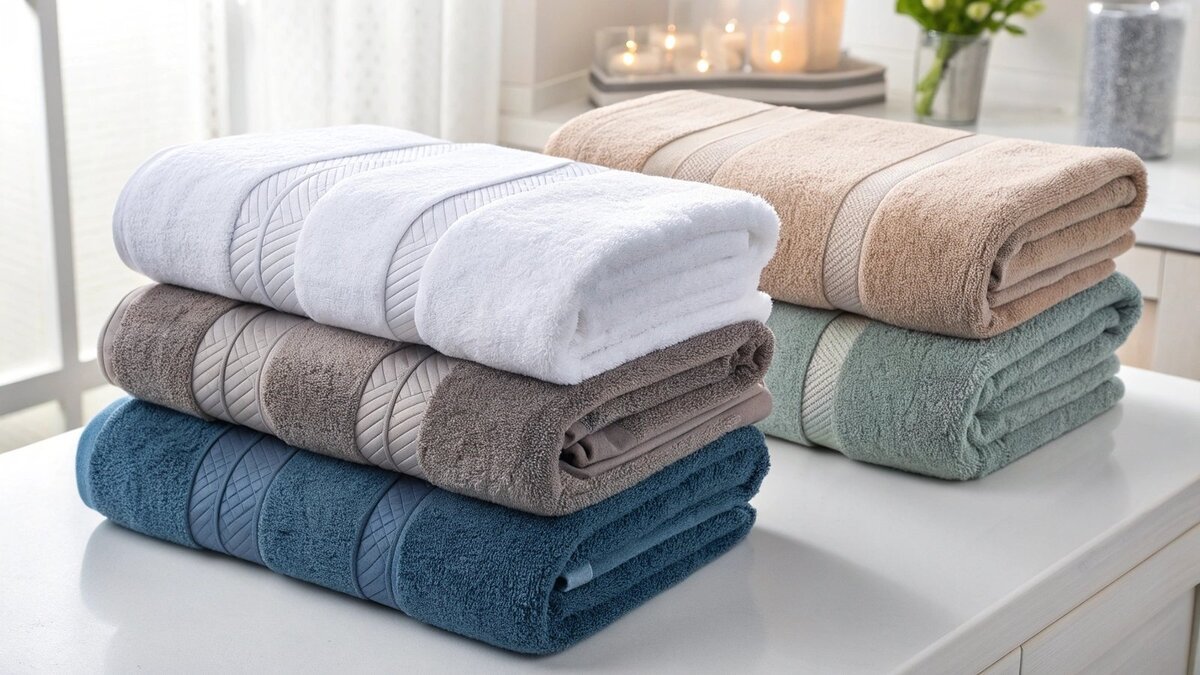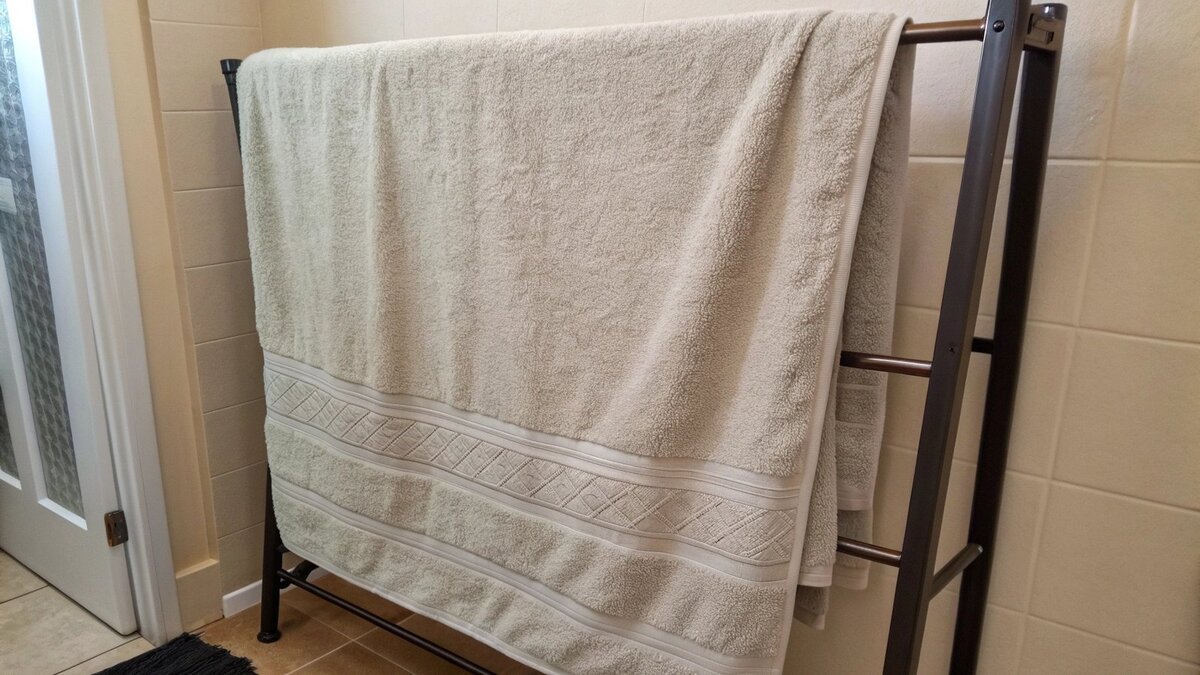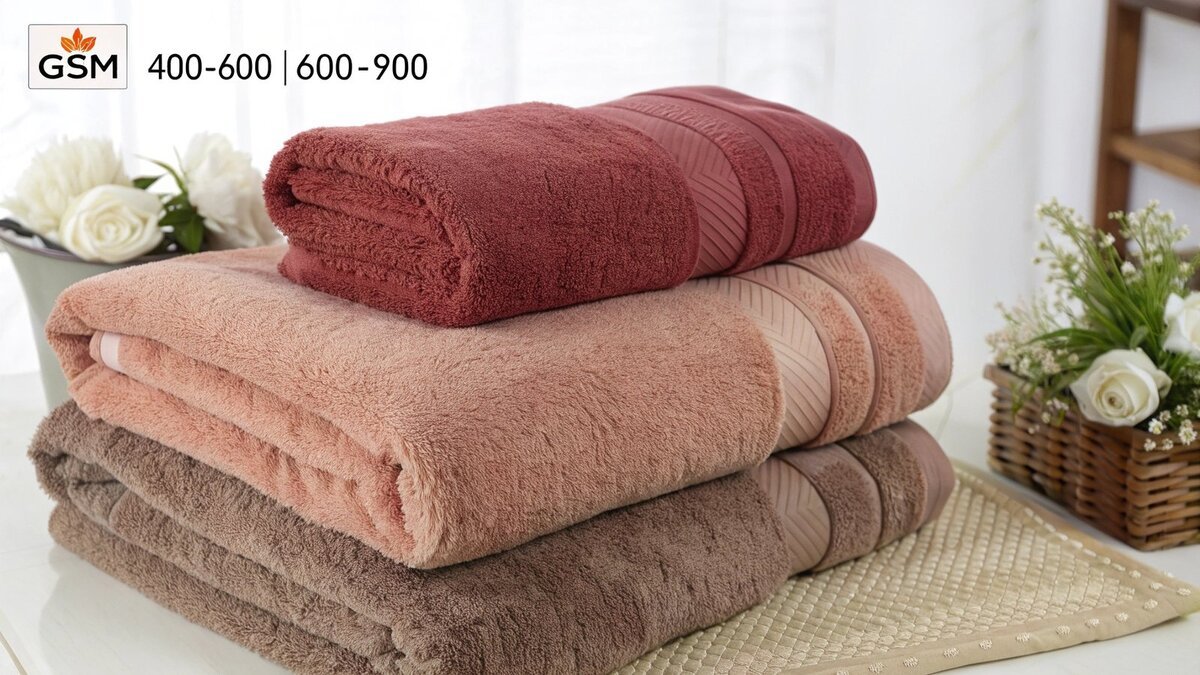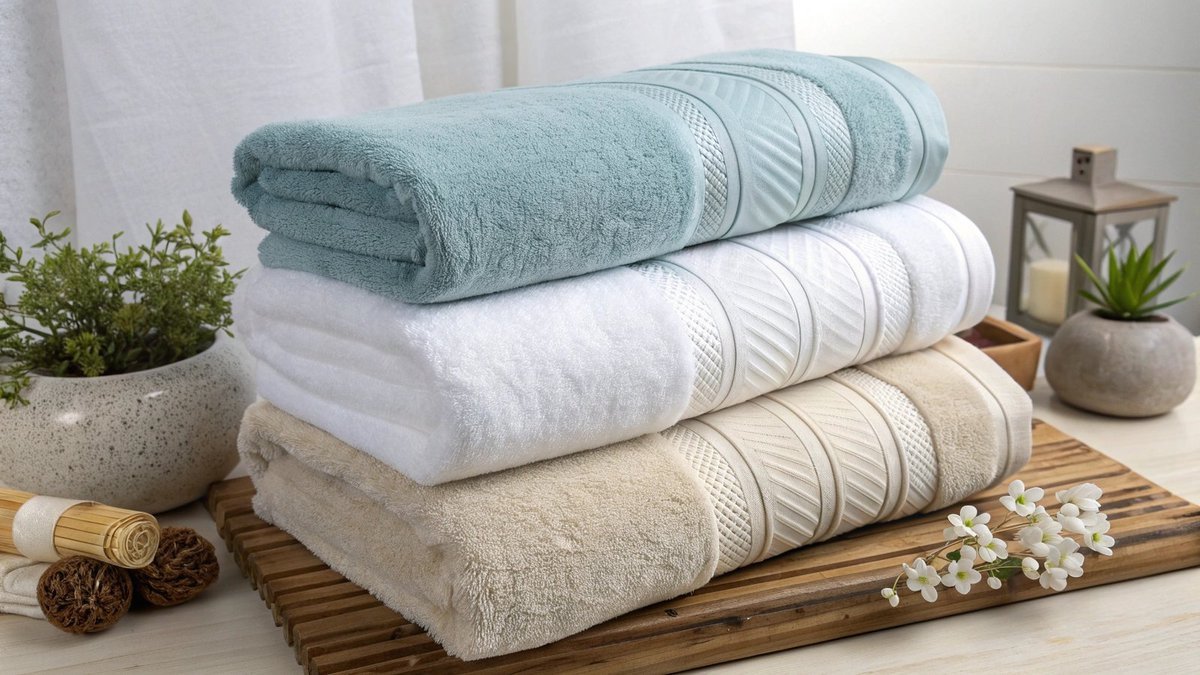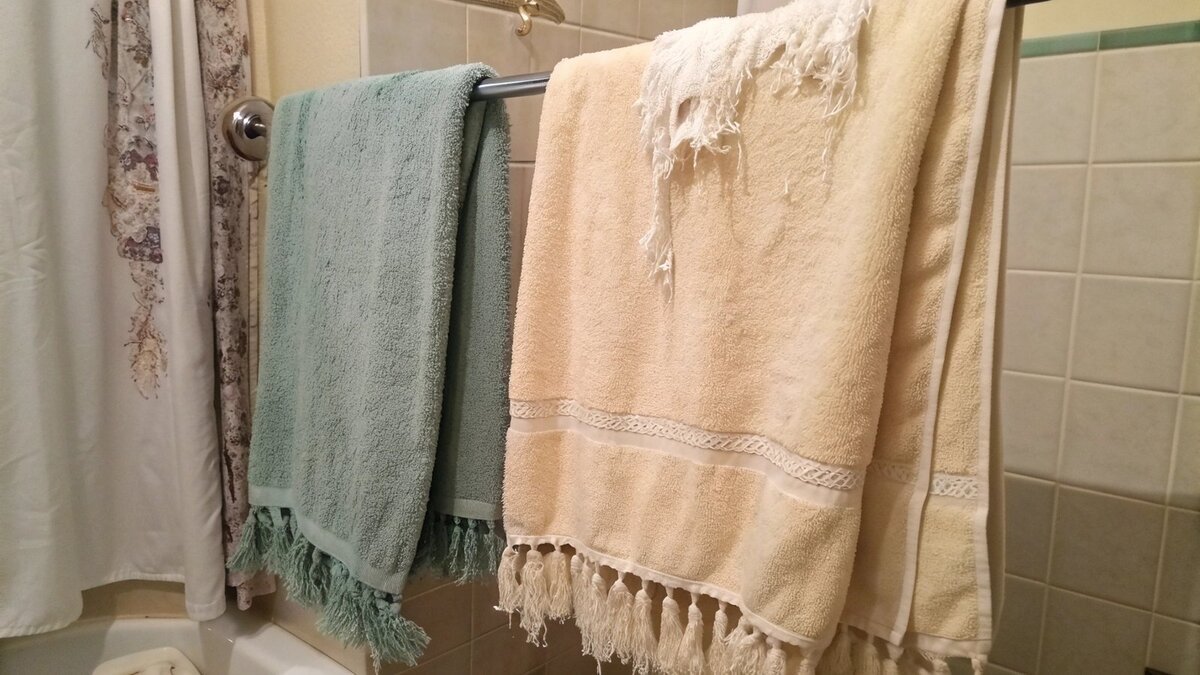Picking a bath towel seems simple, but the wrong one is scratchy and doesn’t dry you. You spend money on towels that feel rough after one wash or stay damp forever.
The perfect bath towel depends on your needs. Look for GSM (grams per square meter) between 400-600 for a balance of softness and absorbency, choose long-staple cotton for durability, and consider the size that best fits your routine and brand.
Finding that perfect towel is a game-changer for your daily routine and your customer’s experience. I’ve spent years helping brands navigate these choices, and it always comes down to the details. But before we get into the specifics of picking the right one, let’s clear up a common point of confusion. Many people use the terms interchangeably, but there are key differences.
What is the difference between a bath towel and a towel?
You see "towel," "hand towel," and "bath towel" used interchangeably. This makes it confusing to buy the right product, especially when ordering in bulk for your business or brand.
A bath towel is specifically designed for drying your body after a shower. It’s much larger than a standard hand towel, typically measuring between 27×52 and 30×58 inches. This larger size provides maximum coverage and absorbency for your entire body, a key feature for any hotel or home.
When we talk about towels in the textile industry, we’re referring to a whole family of products. This includes everything from tiny washcloths to massive bath sheets. The main thing that separates them is their intended use, which dictates their size and sometimes their construction.
Size Defines Function
The most obvious difference is size. A standard bath towel has enough surface area to dry an adult comfortably. A hand towel is smaller, designed for drying your hands. A washcloth is even smaller, for washing your face and body. Then there are bath sheets, which are oversized bath towels for a true luxury, spa-like experience. I once worked with a boutique hotel chain that wanted to offer both bath towels and bath sheets to cater to different guest preferences. It became a small detail that got big compliments in their reviews.
Construction and Purpose
While most quality towels are made from cotton, their construction can vary slightly based on purpose. A bath towel needs to be both absorbent and relatively quick-to-dry. A hand towel, which sees more frequent use, needs to be extra durable. For business clients, this distinction is critical. You wouldn’t stock your hotel rooms with hand towels for showering, and you wouldn’t put a giant, slow-drying bath sheet by every sink.
| Towel Type | Typical Size (Inches) | Primary Use |
|---|---|---|
| Washcloth | 12×12 to 13×13 | Washing face and body |
| Hand Towel | 16×28 to 18×30 | Drying hands |
| Bath Towel | 27×52 to 30×58 | Drying body after a bath/shower |
| Bath Sheet | 35×60 to 40×70 | Full-body wrap, luxury drying |
How can you tell if a bath towel is high quality?
All towels look fluffy and soft on the shelf or online. But after a few washes, many become thin, scratchy, and lose their absorbency. You feel like you wasted your money.
High-quality towels feel heavy and dense. Check the GSM (grams per square meter)—anything from 400-600 is good for daily use, while 600-900 is luxury grade. Also, look for long-staple cotton like Egyptian or Pima, which means stronger, softer, and more absorbent fibers.
Over the years, I’ve handled thousands of towels from different mills. You start to develop a feel for quality. But you don’t need decades of experience to spot a good towel. You just need to know what to look for. The two biggest indicators are the weight, or GSM, and the type of cotton used. These factors determine how soft, absorbent, and durable the towel will be.
Understanding GSM: The Weight of Quality
GSM stands for "grams per square meter." It’s a measure of the towel’s density. A higher GSM means more cotton loops per square inch, which makes the towel heavier, softer, and more absorbent. A low GSM towel will feel light and thin. I remember a new Amazon seller who wanted the "cheapest possible" towel. We made a 350 GSM sample for them. They quickly realized that while it was cheap, it felt unsubstantial and didn’t align with the premium brand they wanted to build. They ended up choosing a 550 GSM towel, and their customer reviews reflected that smart decision.
- 300-400 GSM: Lighter, thinner, and faster-drying. Good for the gym or as a utility towel.
- 400-600 GSM: The perfect middle ground. Soft, absorbent, and durable enough for daily use. This is our most popular range.
- 600-900 GSM: Luxury weight. Very thick, plush, and super absorbent, but takes longer to dry. Think high-end hotel.
The Importance of Fiber Length
Not all cotton is created equal. The length of the individual cotton fibers, known as staples, makes a huge difference. Towels made from long-staple cotton (like Pima or Egyptian cotton) have fibers that are smoother and stronger. When these long fibers are spun into yarn, there are fewer ends sticking out. This results in a towel that is not only softer and less prone to pilling but also more absorbent and durable. Short-staple cotton towels, on the other hand, can feel coarse and wear out much faster.
How do you pick a good bath towel?
You know what makes a towel high-quality, but the options are still overwhelming. You’re worried about making the wrong choice for your brand, your hotel, or even just your own home.
First, choose your material; long-staple cotton is a safe bet for softness and durability. Second, pick a weight (GSM) that fits your preference—400-600 for quick-drying, 600+ for plush luxury. Finally, ensure it’s 100% cotton for the best absorbency.
Picking the right towel is about balancing personal preference with performance. What works for a five-star resort in a dry climate might not be ideal for a beachside rental property in a humid one. I always guide my clients through a simple, three-step process to narrow down the options and find the perfect towel for their specific needs.
Step 1: Choose Your Material
The material is the foundation of a good towel. While you can find towels made from bamboo or microfiber, 100% cotton remains the gold standard for its natural softness and absorbency. Within cotton, you have choices:
- Egyptian Cotton: Grown in Egypt, it has extra-long staples, making it incredibly soft, strong, and absorbent. It’s the peak of luxury.
- Pima Cotton: Grown in the USA, it’s very similar to Egyptian cotton with long staples that provide a soft, dense feel.
- Turkish Cotton: Also has long staples, but it’s known for being slightly less absorbent than Egyptian cotton. This makes it dry faster, which is a huge plus in humid climates. I often recommend Turkish cotton to spas and hotels where quick towel turnover is essential.
Step 2: Decide on Weight (GSM)
Now, think about how you want the towel to feel and perform. Do you want a thick, plush towel that feels like a warm hug, or a lighter towel that dries in a flash? This is where GSM comes in. As we discussed, a 600-900 GSM towel is pure luxury but takes longer to dry. A 400-600 GSM towel offers a great balance for everyday use—it’s soft and absorbent but won’t stay damp for hours. For a client launching a fitness brand, we chose a 450 GSM towel because their customers valued quick-drying performance over spa-like plushness.
Step 3: Check the Construction
Finally, look at the little details. Are the hems double-stitched? This prevents fraying and ensures the towel will last through hundreds of washes. Are the loops dense and tightly packed? This indicates a higher quality weave. I always advise buyers to avoid towels with too many decorative elements on the main body, as these woven patterns can reduce absorbency and sometimes feel scratchy.
How often should you replace bath towels?
Your towels aren’t as soft or absorbent as they used to be. They might even have a faint musty smell, no matter how much you wash them. You wonder if it’s time to let them go.
You should generally replace bath towels every two to five years. The exact time depends on the towel’s quality and how often it’s used. Key signs it’s time for a new one include lingering smells, reduced absorbency, and visible fraying or holes.
Even the highest quality towel won’t last forever. Regular use and washing eventually break down the cotton fibers. For my hotel and spa clients, having a clear replacement schedule is a non-negotiable part of maintaining their brand standard. For home use, it’s more about paying attention to the signs. A towel that no longer does its job well can be frustrating and even unhygienic.
Sign 1: It’s Lost Its Absorbency
The primary job of a towel is to absorb water. Over time, the cotton fibers wear down and flatten. Also, residue from detergents and fabric softeners can build up, creating a waxy coating that repels water instead of absorbing it. If you find you’re just pushing water around on your skin instead of drying off, it’s a clear sign that the towel’s best days are behind it. You can try a "strip wash" with vinegar and baking soda to remove buildup, but if that doesn’t restore its thirst, it’s time for a replacement.
Sign 2: It Never Smells Fresh
If your towel has a persistent musty smell even when it’s fresh out of the dryer, that’s a red flag. This smell is caused by mildew and bacteria that have embedded deep within the fibers. As towels age, their fibers become less efficient at drying completely, creating a breeding ground for this bacteria. No amount of washing can fully eliminate it at this point. For a hospitality business, a smelly towel is a major guest complaint waiting to happen. We set up an automatic reorder plan for a large gym chain for this very reason.
Sign 3: It’s Visibly Worn Out
This is the most obvious sign. Look for frayed edges, thinning patches you can almost see through, and small holes or tears. These are signs of physical breakdown. A towel with compromised integrity is not only less effective but also looks tired and old. Replacing visibly worn towels is an easy way to keep your linen closet—or your hotel’s inventory—feeling fresh and premium.
Conclusion
Finding the right bath towel comes down to material, weight, and size. Knowing what to look for, and when to replace them, ensures a great experience for you or your customers.

